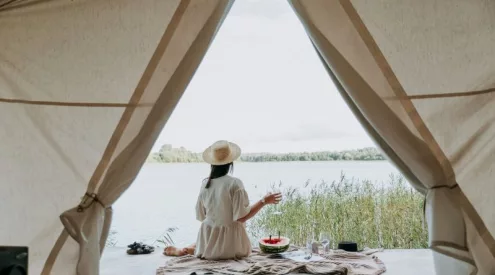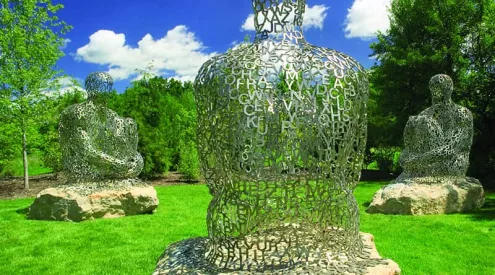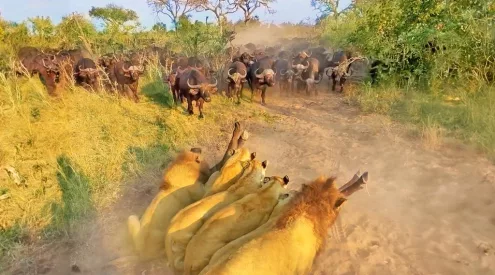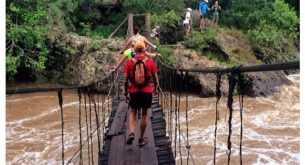SANParks and the Jock Safari Lodge Environmental Monitoring Unit worked quickly to rescue an orphaned rhino calf from poachers, a herd of elephants and a pride of lions. The disorientated male calf was found wandering alone on a tourist road in the south of the Kruger National Park.
The calf, who is estimated to be between six and eight months old, was spotted by pure chance by a member of JEMU, the Environmental Monitoring Unit of Jock Safari Lodge, who was on his way to the Concession.
Owned and managed by the non-profit Caleo Foundation, Jock Safari Lodge was the first private concession within the Kruger National Park. Over the past 20 years Jock has worked closely with SANParks in support of various conservation initiatives, including the protection of endangered species such rhinos.
When he was found, the calf was clearly in distress, wandering around on his own just off a main tourist road. Rhino mothers very rarely leave their calves, which indicated that the mother was most likely already dead. The Kruger National Park Regional Ranger was immediately alerted to the baby rhino, who instantly assembled a Reaction Team in a combined effort to save the orphaned calf.
The rhino calf was however moving deeper into the bush and fearing that the Reaction Team might not find the calf if visual was lost, the JEMU member started tracking the baby rhino on foot. After about 2km, the calf suddenly came into contact with a herd of about 15 elephants. The elephants were aggressive and repeatedly charged towards the baby rhino with the obvious intent to kill it. Supported by a Kruger Park official that caught up with him, they distracted the herd by shouting and clapping hands to draw attention away from the rhino calf.
Clearly dazed and confused, the baby rhino continued to follow the elephants, with the aggressive matriarch charging continuing, placing the calf in grave danger.
After several charges, the calf fortunately ran off into another direction, where he was later found standing next to the carcass of his mother. The mother had been killed by poachers and her horns had been removed. She was left to die, unable to provide for her baby or defend the vulnerable calf.
There was a flurry of activity, not only with the elephants in hot pursuit of the calf, but by now there were several lions very close to the carcass, making several advances on the calf.
The lions spotted the JEMU member and left the calf to stare down the JEMU member with growls and tail whipping. The team retreated to a large termite mound, where they communicated a new GPS Coordinate to the Reaction Team and kept lock on the baby rhino until the helicopter had visual on the site.
Instinctively, the exhausted baby rhino gave one last chase with the arrival of the chopper, closely followed by an enraged elephant cow. Thanks to his excellent flying skills, the helicopter pilot managed to separate the calf from the herd of elephants to give the vet the opportunity to dart the baby.
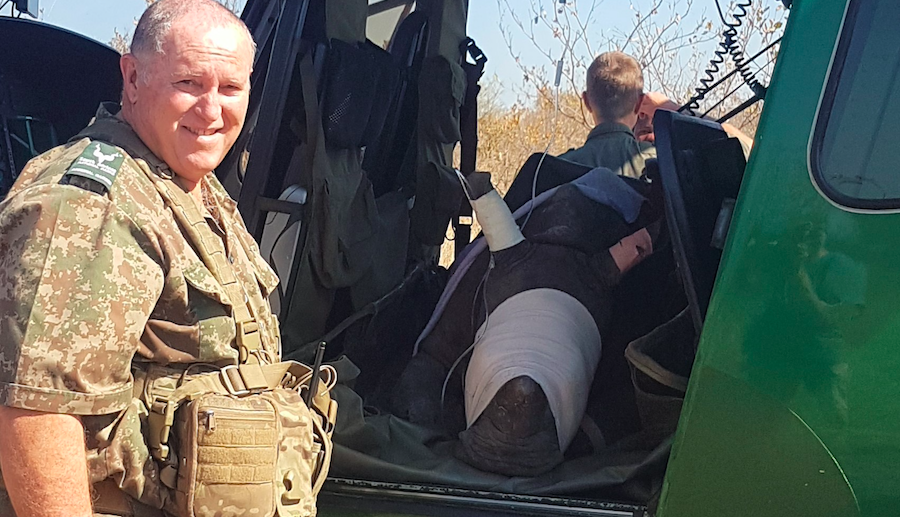
Don English SANParks Regional Ranger with the rhino calf in the helicopter. Image credit: Supplied
After a few minutes, the calf was tranquillised, giving space for the Reaction Team to move in and perform vital lifesaving first-aid on the baby. A drip was inserted to treat its obvious dehydration and the calf was safely transferred by helicopter to a sanctuary a team were on standby to meet the precious new arrival.
The baby rhino was taken into the ICU for monitoring and to receive vital fluids through the line that was administered in the field earlier that day. The calf was assessed for wounds, but apart from lion scratch marks, he seemed to have escaped relatively unscathed.
The calf was clearly very traumatised after its ordeal and the sanctuary team spent the first night in the enclosure with him to monitor his progress.
In a recent update, it was reported that the calf has accepted the bottle of specialised, formulated milk and is drinking about 16 litres per day. He remains in a small enclosure and is still on a drip to monitor his vitals and organs. To recover from severe trauma like this, the first 24 to 72 hours are the most critical and it is therefore estimated that he should have a good chance of survival.
Having survived all of this, he’s been named Nhlanhla, ‘the lucky one’ in local Shangaan language.
Watch below to see snippets of his rescue and how he is doing:



